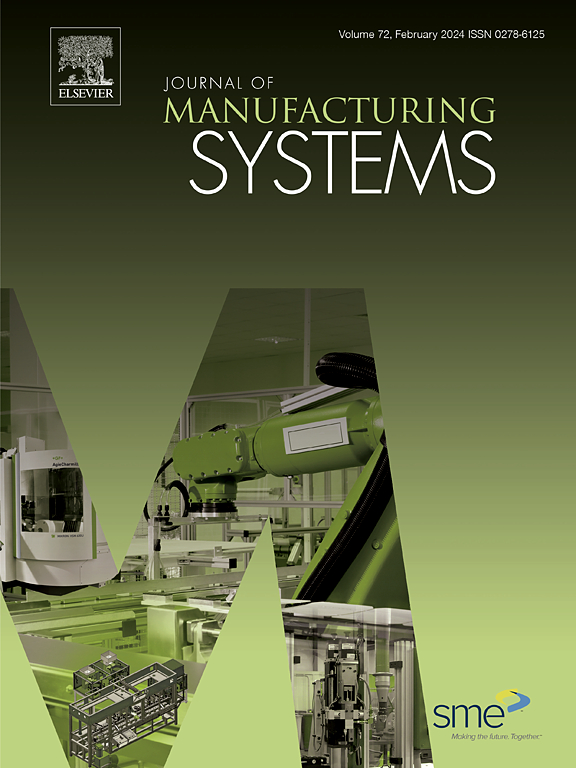不规则形状物体的自动托盘装载:一种深度强化学习和多准则优化方法
IF 14.2
1区 工程技术
Q1 ENGINEERING, INDUSTRIAL
引用次数: 0
摘要
码垛在制造业提出了一个艰巨的挑战,特别是当处理不规则形状的物体。本文介绍了一种优化托盘装载场景的新方法,该方法集成了深度强化学习(DRL)和启发式方法,在自动化托盘管道中进行稳定性评估和约束满足。提出的解决方案由四个关键组件组成。首先,每个对象都经过预处理,包括从数据文件中提取形状和生成评估稳定性和托盘适用性的指标。随后,使用经过训练以预测最佳加载序列的DRL代理或基于规则的优先级策略执行对象选择,从而可以对选择方法进行比较分析。然后应用约束满足技术来缩小候选安置位置的搜索空间。最后,使用基于加权性能标准评估候选位置和方向的多准则决策(MCDM)方法确定最优目标放置。提出的框架通过建筑铝行业的案例研究进行了验证,展示了它在负责分拣和包装客户订单的生产线自动化中的关键作用。本文章由计算机程序翻译,如有差异,请以英文原文为准。
Automated pallet loading of irregularly shaped objects: A deep reinforcement learning and multi-criteria optimization method
Palletizing in manufacturing presents a formidable challenge, particularly when dealing with irregularly shaped objects. This paper introduces a novel approach to optimizing pallet loading scenarios integrating Deep Reinforcement Learning (DRL) and heuristic methods with stability assessment and constraint satisfaction within an automated palletization pipeline. The proposed solution consists of four key components. First, each object undergoes preprocessing, involving shape extraction from data files and the generation of metrics to evaluate stability and palletization suitability. Subsequently, object selection is performed using either a DRL agent—trained to predict optimal loading sequences—or a rule-based prioritization strategy, enabling a comparative analysis of selection methods. Constraint satisfaction techniques are then applied to narrow down the search space for candidate placement positions. Finally, optimal object placement is determined using a Multi-Criteria Decision-Making (MCDM) approach that evaluates candidate positions and orientations based on weighted performance criteria. The proposed framework is validated through a case study in the architectural aluminum industry, demonstrating its pivotal role in automating a production line responsible for sorting and packaging customer orders.
求助全文
通过发布文献求助,成功后即可免费获取论文全文。
去求助
来源期刊

Journal of Manufacturing Systems
工程技术-工程:工业
CiteScore
23.30
自引率
13.20%
发文量
216
审稿时长
25 days
期刊介绍:
The Journal of Manufacturing Systems is dedicated to showcasing cutting-edge fundamental and applied research in manufacturing at the systems level. Encompassing products, equipment, people, information, control, and support functions, manufacturing systems play a pivotal role in the economical and competitive development, production, delivery, and total lifecycle of products, meeting market and societal needs.
With a commitment to publishing archival scholarly literature, the journal strives to advance the state of the art in manufacturing systems and foster innovation in crafting efficient, robust, and sustainable manufacturing systems. The focus extends from equipment-level considerations to the broader scope of the extended enterprise. The Journal welcomes research addressing challenges across various scales, including nano, micro, and macro-scale manufacturing, and spanning diverse sectors such as aerospace, automotive, energy, and medical device manufacturing.
 求助内容:
求助内容: 应助结果提醒方式:
应助结果提醒方式:


